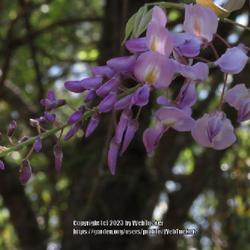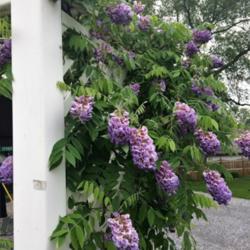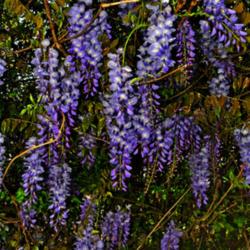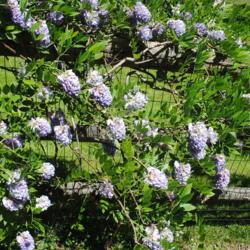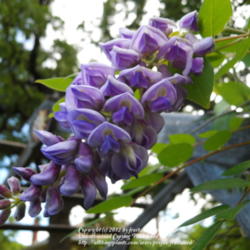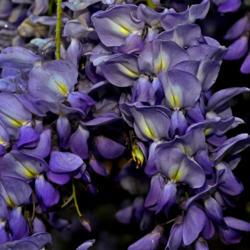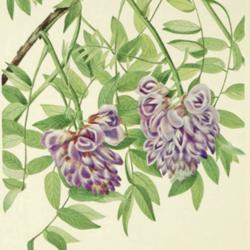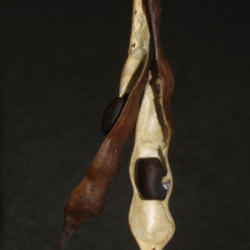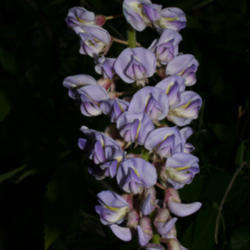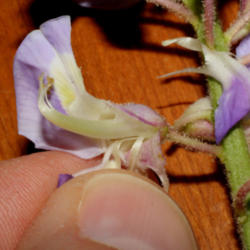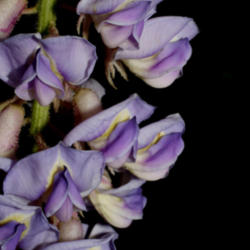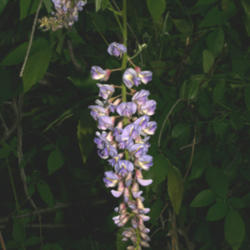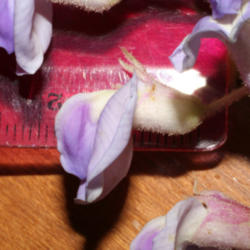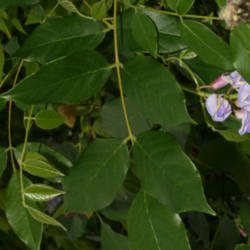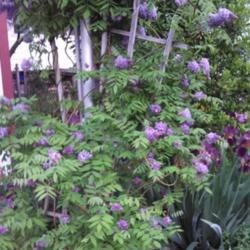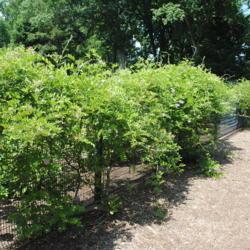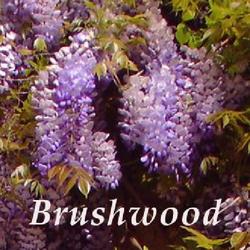Posted by
plantladylin (Sebastian, Florida - Zone 10a) on Feb 17, 2013 9:00 PM concerning plant:
American Wisteria is a Florida native, mostly limited to the panhandle area. This vine can climb 30 to 40 feet and has large, 4" to 9" long drooping clusters of numerous pea-like, 3/4 inch lilac to purplish flowers. The fruit of American Wisteria is a 2-5" narrow, smooth green pod that turns brown when mature. This woody, deciduous vine grows in habitats of moist areas, stream margins, swamps, and wet forests. American Wisteria is attractive to bees and the leaves are a host plant for caterpillars of the Long-tailed Skipper and Silver-spotted Skipper.
I purchased this plant at a local nursery about 15 years ago and planted it in my backyard to climb a pole. Unlike its relative, Chinese Wisteria (W. sinensis), the American Wisteria is a well-behaved vine that blooms profusely every spring. The flowers have a slight musky smell that I don't find appealing.
Posted by
ILPARW (southeast Pennsylvania - Zone 6b) on Mar 25, 2019 6:56 PM concerning plant:
The American Wisteria has its alternate, compound pinnate leaves about 7 to 12 inches long with 9 to 15 leaflets of uniform size with each leaflet 1.5 to 2.5 inches long by 1.25 inches wide and slightly hairy below. The fragrant 3/4 inch long pale lilac-purple flowers have a yellow spot and are compressed into 4 to 6 inch long raceme clusters in June - August, blooming after the foliage appears and has recurrent flowering on the new growth of the season. The pods are 2 to 4 inches long, hairless, and with rounded seeds. Native from Virginia to Florida to east Texas along shores of watercourses and bodies of water, borders of wet woodlands, and swamps. (The very similar Kentucky Wisteria (W. macrostachys) usually has 9 leaflets that are 1 to 3 inches long and with lilac-purple flowers in 8 to 12 inch long raceme clusters and with pods 3 to 5 inches long and often twisted. Many consider the Kentucky to be a variety of the American species. that is found from Missouri to Tennessee to east Texas.) This American species is not aggressive and powerful like the Chinese & Japanese species.
Posted by
Catmint20906 (PNW WA half hour south of Olympia - Zone 8a) on Aug 3, 2014 2:30 PM concerning plant:
Wisteria frutescens is a larval host plant to a variety of Skipper Butterflies, including the Silver-spotted Skipper, Horace's Duskywing Skipper, Zarucco Duskywing Skipper, and Long-tailed Skipper.
It is a beautiful native alternative to the Chinese and Japanese wisteria which have escaped cultivation and been declared invasive in many states.
Posted by
SongofJoy (Clarksville, TN - Zone 6b) on Jan 15, 2012 3:28 PM concerning plant:
American Wisteria occurs infrequently in low open woods throughout much of the southeastern coastal plain area. It is not nearly as vigorous as the Chinese Wisteria which has escaped cultivation and festoons wild trees in our area, but it will still easily grow to 30 feet or more. The late spring and early summer flower clusters occurring on the current year's growth are similar 4 to 6 inch racemes of fragrant pale violet to lilac with a yellow spot. Grow this vine in full sun to light shade in average soil where you want the effect but perhaps not the strength of Chinese Wisteria.

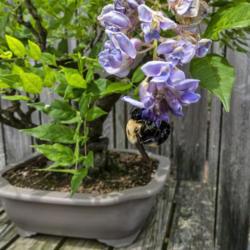
![Location: In a church courtyard in Oklahoma City
Date: Spring, 2007
Wisteria frutescens [American Wisteria] in OkC 001 Location: In a church courtyard in Oklahoma City
Date: Spring, 2007
Wisteria frutescens [American Wisteria] in OkC 001](/pics/2019-10-18/jathton/fe857c-250.jpg)
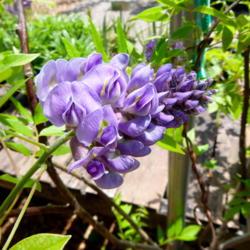

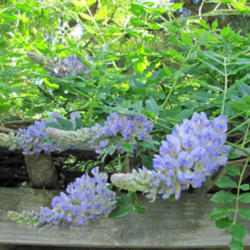
![Location: In a church courtyard in Oklahoma City
Date: Spring, 2007
isteria frutescens [American Wisteria] in OkC 002 Location: In a church courtyard in Oklahoma City
Date: Spring, 2007
isteria frutescens [American Wisteria] in OkC 002](/pics/2019-10-18/jathton/309795-250.jpg)
